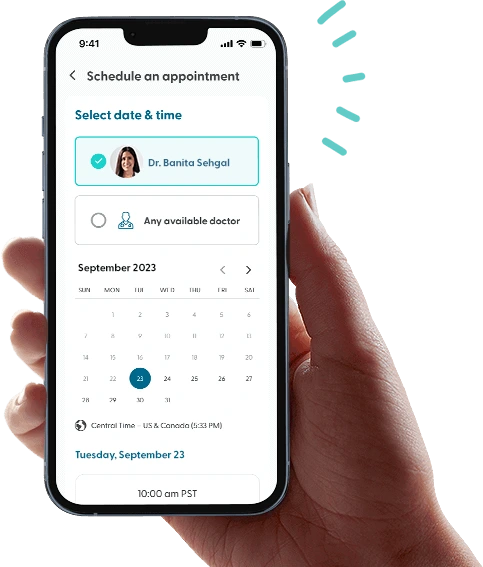Saxenda Side Effects: What You Need to Know
Highlights
-
Saxenda is an injectable medication that helps to treat overweight conditions like obesity and other related health issues.
-
The side effects caused by this medication can range from mild to moderate, including gastrointestinal problems, fatigue, and headaches.
-
You can manage mild side effects by making lifestyle changes, taking over-the-counter medications, and ensuring that you follow the correct dosage instructions.
-
In some cases, Saxenda may cause serious side effects including pancreatitis, gallbladder problems, and even mental health issues. If you experience any of these, seek emergency medical attention.
Drugs like Saxenda have become powerful tools for helping overweight individuals take control of their health and well-being.
Among its many benefits, Saxenda has shown promising results in patients treated for overweight conditions and appetite control. However, this medication also has some unpleasant side effects.
Although many of these side effects can be managed, knowing what adverse reactions to expect can help you make informed decisions about using this drug.
Understanding the side effects of Saxenda can help you recognize critical situations and seek medical assistance during emergencies.
What is Saxenda?
Saxenda is an injectable prescription medication used to treat conditions like obesity and other weight-related issues.
It contains liraglutide — an active ingredient that mimics the naturally occurring hormone called glucagon-like peptide-1 (GLP-1). This makes Saxenda a GLP-1 agonist.
GLP-1 helps to regulate blood sugar levels and controls feelings of hunger and fullness. As a GLP-1 agonist, Saxenda can help the body regulate insulin to maintain blood sugar levels.
Once injected, Saxenda also stimulates GLP-1 receptors in the brain to create a sense of satiety. Over time, this can reduce your appetite and help you achieve a healthy weight.
Saxenda is typically recommended for adults with a body mass index (BMI) of over 27 and children between the ages of 12 and 17 who weigh more than 132 pounds.
This medication should also be used in conjunction with increased physical activity and weight loss strategies that promote a calorie deficit.
Get prescription weight loss medication online.
Find out if you're eligible for GLP-1s, and get started on your weight loss journey.


Does Saxenda Have Side Effects?
Saxenda is known to cause a variety of side effects, ranging from mild to severe. It’s important to know when your reactions are serious to ensure you get proper medical attention.
Common side effects
Mild side effects are commonly caused by Saxenda. These may include:
Bloating
Abdominal pain
Constipation
Dizziness
Diarrhea
Headache
Fatigue
Indigestion
Gastroenteritis
Injection site reactions
Nausea and vomiting
These side effects are temporary and tend to last up to a few weeks. As the body adjusts to the medication, mild side effects will start to resolve.
If you experience persistent adverse reactions, contact your doctor. They may have to adjust your dosage or prescribe alternative medication.
Serious side effects
Saxenda may also cause serious side effects, although these are rare. They may include:
Gallbladder problems, including gallstones
Severe abdominal pain
Muscle aches
Diarrhea
Fever
Jaundice
Heart palpitations
Chest pain
Pancreatitis (inflammation of the pancreas)
Severe burning pain in the abdomen
Self-harm or suicidal thoughts and behaviors
New or worsening depression
Severe mood or behavioral changes
Kidney failure
Low blood sugar
Severe allergic reactions, including facial swelling and breathing difficulties
If you develop any of these while using the medication, get emergency medical attention.
Serious side effects can be life-threatening if left untreated, so it’s important to speak to your doctor immediately if you experience any of the above-listed effects.
Key Point: Who Should Avoid Using Saxenda?
Although Saxenda is generally safe to use for most people, certain groups should avoid this medication. This includes people who:
- Are allergic to any of the ingredients in Saxenda
- Are expecting or planning to become pregnant
- Are breastfeeding or planning to breastfeed
- Have severe stomach issues
- Have pancreas, kidney, or liver problems
- Have gallbladder disease
- Are struggling with mental health issues
Saxenda also carries a boxed warning for an increased risk of developing thyroid c-cell tumors.
If you have a personal or family history of this condition, discuss the risks with your doctor before using Saxenda.
Tips for Managing Adverse Reactions
Follow dosage instructions
Following your healthcare provider’s instructions on injecting Saxenda is essential for managing the side effects.
This helps you maintain a consistent dosage, which allows the body to adjust to the medication. Injecting Saxenda correctly can also help minimize adverse reactions.
Eat smaller, more frequent meals
If you experience nausea or indigestion while taking Saxenda, eating smaller and more frequent meals may help alleviate this.
This strategy makes it easier for the body to digest food and move it through the stomach faster.
Take over-the-counter (OTC) medication
OTC medications may be a good option for relieving mild to moderate discomfort caused by Saxenda. Your doctor may recommend the following:
Antacids for gastrointestinal issues or heartburn
Anti-nausea medications
Pain relievers like Tylenol or Advil
Antidiarrheal medications
Stool softeners or laxatives
Oral rehydration solutions
Before using any OTC options, be sure to check how they interact with Saxenda. Some drugs can worsen side effects and even make certain medications less effective.
Be patient
Many side effects associated with Saxenda — especially gastrointestinal discomfort — tend to improve as your body adjusts to the medication.
It’s important to be patient and allow Saxenda to work as intended before you give up completely.
Ready to achieve your weight loss goals?
Shed pounds with GLP-1 medication prescribed online by licensed healthcare providers.


Common Questions About Saxenda Side Effects
Will side effects resolve when you stop using Saxenda?
You may experience a few mild side effects after you stop taking Saxenda.
This medication suppresses your appetite, so when you stop taking it, you may feel more hungry than before.
Over a short period of time, this can cause indigestion and weight gain as your body readjusts.
Be sure to speak to your doctor before you stop using Saxenda. They can help you understand what to expect and how to reduce the risk of prolonged side effects.
How long do Saxenda’s side effects last?
In most cases, side effects can last anywhere from a couple of days to a few weeks. They typically don’t have a significant effect on your daily life and will improve over time.
If you do experience symptoms that interfere with day-to-day activities, make an appointment with your doctor to determine their cause.
Your doctor may also recommend alternative weight management options that cause less discomfort.
Does Saxenda cause hair loss?
There is currently no evidence to suggest that Saxenda causes hair loss. However, when you lose weight too quickly or your diet isn’t rich in nutrients, you may start losing hair.
Notify your doctor if you experience any hair loss while taking Saxenda, as you may need your dosage to be adjusted to reduce unpleasant drug interactions.
When Should You See a Doctor About the Side Effects of Saxenda?
It’s generally advisable to make an appointment with your doctor if you experience any of the following while taking Saxenda:
Severe or persistent side effects: If you experience severe side effects that interfere with your daily life or continue for an extended period, you must seek medical attention. Serious side effects may include uncontrolled vomiting, persistent diarrhea, or severe allergic reactions.
Worsening side effects: If any side effects initially seemed mild but have worsened or become more frequent, consult your healthcare provider.
Unusual symptoms: If you experience unusual or unexpected symptoms that you suspect may be related to Saxenda, contact your doctor for an evaluation.
Signs of allergic reactions: Seek immediate medical attention if you experience signs of an allergic reaction, such as hives, itching, swelling, or breathing difficulties.
Low blood sugar (hypoglycemia): If you have diabetes or are at risk of hypoglycemia, closely monitor your blood sugar levels while taking Saxenda. Consult your health care provider to adjust your diabetes management plan if you experience frequent or severe hypoglycemia.
If you have any other concerns, questions, or uncertainties about your side effects, it's always a good idea to discuss them with your healthcare provider.
They can guide you, adjust your medication dosage, or explore alternative weight management options.
Where Can You Learn More About Saxenda and Similar Medications?
If you’re concerned about weight management or want to know more about medications like Saxenda, LifeMD is here to help.
LifeMD also offers a Weight Management Program, designed to help you get started on a personalized weight loss journey.
Make an appointment today to learn more about weight loss strategies and alternative options to help you reach your health goals.
More articles like this
Feel better with LifeMD.
Your doctor is online and ready to see you.
Join LifeMD today and experience amazing healthcare, discounted labs and prescription medications... plus around-the-clock access to medical guidance.

GLP-1
Ozempic® Wegovy® Zepbound®
This is it! Be part of the weight loss movement everyone’s talking about.
Get Started Now












